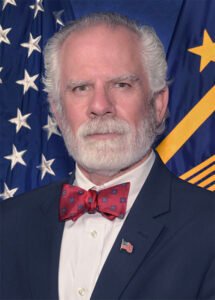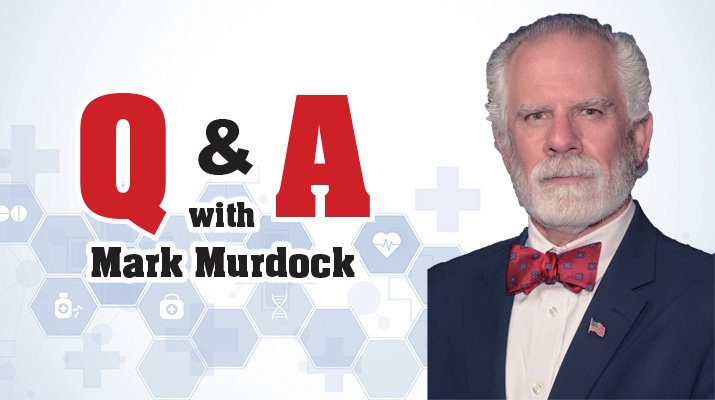Syracuse VA Medical Center’s new director and CEO was born in Watertown he—wants to make it easier for veterans to receive care in the community
By Mary Beth Roach
Q: In what branch of the military did you serve?
A: I served in the United States Air Force from 1981 to 1999.
Q: What are your chief responsibilities as head of the VA Medical Center?
A: My chief responsibility is to lead more than 1,800 employees to partner with more than the 40,000 veterans that we take care of to try to optimize their health and their life. It’s really a partnership. We provide a full portfolio of services, from primary care to mental health to surgical care, specialty care, acute inpatient care, long term care, rehabilitative care — a pretty broad spectrum of healthcare services that we provide for our veterans.
Q: What is the coverage area for the VA?
A: We go all the way up to the Canadian border down to the Pennsylvania border.
Q: What is the budget that you work with at the VA?
A: Our budget is approximately about $375 million and usually what happens over the course of the year, between capital projects and maybe some other program programmatic adjustments that happen, we’re probably over about $400 million this year.
Q: You came from the Dayton VA Medical Center. Were you assigned here?
A: There was an opening and I applied. I was born in Watertown and raised in Sackets Harbor and it gave me an opportunity to come back to the area. I always think about my hometown and put my hometown in my bio. It means a lot to me. My father was a Navy veteran. He was from Syracuse and probably one of the first patients here at the Syracuse VA in the 1950s.
Q: What do you see as the challenges that the VA hospital face?
A: I think one of the challenges for us — with the legislation [the VA MISSION Act] that came about in 2018 — is making it easier for veterans to receive care in the community. This is driven by a couple of things. The drive times for some of our rural veterans — how far away they are from services — and wait times. I think one of the big challenges that we have is to continue to work strategically on what services we do within the confines of the VA and what services we use our great community partners to help us. We went straight from that legislation right into COVID. So, we really didn’t get an opportunity to be as strategic about that as we should be. And we’re really trying to make some of those decisions and do that analysis right now. I think veterans are in the best situation that they’ve been in probably in my lifetime, as far as the delivery of care and the services that are provided. We’ve made a lot of great strides in our trust with our veterans and the services we provide. The VA has come a long way and we’re very proud of that. We try to learn and improve every day. Using our community partners effectively and making good decisions about the services that we provide within the brick-and-mortar of the VA are some of our biggest challenges moving forward.
Q: You mention community partners. Can you give me an example?
A: Upstate [Medical University] is a great community partner here locally. Crouse is a great community partner, St. Joe’s and in the Watertown area, Samaritan Hospital. For a lot of our veterans, sometimes based on their health situation, those community partners are there to catch them, take care of them and help us manage their care.
Q: What are some of the benefits of working for the Syracuse VA Medical Center?
A: It’s got a phenomenal tradition. I think the partnership is very special when you take a look at our community partners and the geographic location of them, with Upstate right here, with Crouse right here, with St. Joe’s so close. I think veterans and the community itself are well-served by the healthcare resources that we have. We’ve got the Institute for Veterans and Military Families here, which is awesome. We’ve got some other partners — Clear Path for Veterans and all of our county veteran service agencies. I think veterans are very well appreciated, loved and taken care of in this area.
Q: Do you have any plans or initiatives you’d like to put in place in the future?
A: Our goal each day is to do the very best that we can from the standpoint of access to care for our veterans, and from a quality perspective. The drivers for us are the veterans’ satisfaction with the care that they receive and our employee satisfaction, as far as this being a great place for them to work. That partnership between our veterans and employees is really where we improve health outcomes. We really try to partner to improve the lives of our veterans. A lot of that is through whole health initiatives. We want veterans to do as much for themselves as they can, owning their own health and helping make the life decisions that give them the very best lives that they can have. There’s a lot that we try to teach our veterans that they can do for themselves as well. Ultimately as a healthcare system, we’re very uniquely positioned. There’re a lot of things that we’d like to do less of — we’d like to write less prescriptions, we’d like to have people optimize their health and have less days in the hospital. Whole health is very important to us as an organization.
Q: Is there anything you’d like to add?
A: Just how grateful I am to be here and that we have a phenomenal team of leaders in our organization. I think COVID hit this part of the country and Central New York pretty hard. I think we saw a lot of folks that have left healthcare during that time period. We are really getting our legs underneath us again from a staffing standpoint, especially with nursing. Very grateful to the team that we have and the leaders that we have to partner with our veterans and very grateful for the service of all of our veterans of all eras.
 Mark Murdock took over as director/chief executive officer of the Syracuse VA Medical Center on Aug. 1, 2023. For more information on the VA, visit www.va.gov/syracuse-health-care.
Mark Murdock took over as director/chief executive officer of the Syracuse VA Medical Center on Aug. 1, 2023. For more information on the VA, visit www.va.gov/syracuse-health-care.

